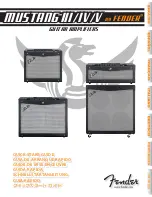
EMV / EMC
X
Störstrahlung und Störfestigkeit
Das Gerät entspricht den Schutzanforderungen auf dem
Gebiet elektromagnetischer Phänomene, wie u.a. in den
Richtlinien 89/336/EWG und FCC, Part 15, aufgeführt:
1. Vom Gerät erzeugte elektromagnetische Strahlung ist
soweit begrenzt, dass bestimmungsgemässer Betrieb
anderer Geräte und Systeme möglich ist.
2. Das Gerät weist eine angemessene Festigkeit gegen
elektromagnetische Störungen auf, so dass sein be-
stimmungsgemässer Betrieb möglich ist.
Das Gerät wurde getestet und erfüllt die Bedingungen
der im Kapitel „Technische Daten“ aufgeführten EMV-
Standards. Die Limiten dieser Standards gewährleisten
mit angemessener Wahrscheinlichkeit sowohl den
Schutz der Umgebung wie auch entsprechende Stör-
festigkeit des Gerätes. Absolute Garantie, dass keine
unerlaubte elektromagnetische Beeinträchtigung wäh-
rend des Betriebes entsteht, ist jedoch nicht gegeben.
Um die Wahrscheinlichkeit solcher Beeinträchtigung
weitgehend auszuschliessen, sind u.a. folgende Mass-
nahmen zu beachten:
• Installieren Sie das Gerät gemäss den Angaben in der
Betriebsanleitung, und verwenden Sie das mitgelie-
ferte Zubehör.
• Verwenden Sie im System und in der Umgebung, in
denen das Gerät eingesetzt ist, nur Komponenten
(Anlagen, Geräte), die ihrerseits die Anforderungen
der obenerwähnten Standards erfüllen.
• Sehen Sie ein Erdungskonzept des Systems vor, das
sowohl die Sicherheitsanforderungen (die Erdung der
Geräte gemäss Schutzklasse I mit einem Schutzleiter
muss gewährleistet sein), wie auch die EMV-Belange
berücksichtigt. Bei der Entscheidung zwischen stern-
oder flächenförmiger bzw. kombinierter Erdung sind
Vor- und Nachteile gegeneinander abzuwägen.
• Benutzen Sie abgeschirmte Kabel, wo vorgesehen.
Achten Sie auf einwandfreie, grossflächige, korrosi-
onsbeständige Verbindung der Abschirmung zum
entsprechenden Steckeranschluss und dessen Gehäu-
se. Beachten Sie, dass eine nur an einem Ende ange-
schlossene Kabelabschirmung als Sende- bzw. Emp-
fangsantenne wirken kann (z.B. bei wirksamer Ka-
bellänge von 5 m oberhalb von 10 MHz), und dass
die Flanken digitaler Kommunikationssignale hoch-
frequente Aussendungen verursachen (z.B. LS- oder
HC-Logik bis 30 MHz).
• Vermeiden Sie Bildung von Masseschleifen oder ver-
mindern Sie deren unerwünschte Auswirkung, indem
Sie deren Fläche möglichst klein halten und den darin
fliessenden Strom durch Einfügen einer Impedanz
(z.B. Gleichtaktdrossel) reduzieren.
Electromagnetic Compatibility
The equipment conforms to the protection requirements
relevant to electromagnetic phenomena that are listed in
the guidelines 89/336/EC and FCC, part 15.
1. The electromagnetic interference generated by the
equipment is limited in such a way that other equip-
ment and systems can be operated normally.
2. The equipment is adequately protected against elec-
tromagnetic interference so that it can operate cor-
rectly.
The unit has been tested and conforms to the EMC
standards applicable to residential, commercial and
light industry, as listed in the section „Technical Data“.
The limits of these standards reasonably ensure protec-
tion of the environment and corresponding noise immu-
nity of the equipment. However, it is not absolutely
warranted that the equipment will not be adversely af-
fected by electromagnetic interference during operation.
To minimize the probability of electromagnetic interfer-
ence as far as possible, the following recommendations
should be followed:
• Install the equipment in accordance with the opera-
ting instructions. Use the supplied accessories.
• In the system and in the vicinity where the equipment
is installed, use only components (systems, equip-
ment) that also fulfill the above EMC standards.
• Use a system grounding concept that satisfies the
safety requirements (protection class I equipment
must be connected with a protective ground conduc-
tor) that also takes into consideration the EMC requi-
rements. When deciding between radial, surface or
combined grounding, the advantages and disad-
vantages should be carefully evaluated in each case.
• Use shielded cables where shielding is specified. The
connection of the shield to the corresponding con-
nector terminal or housing should have a large sur-
face and be corrosion-proof. Please note that a cable
shield connected only single-ended can act as a
transmitting or receiving antenna (e.g. with an effec-
tive cable length of 5 m, the frequency is above
10 MHz) and that the edges of the digital communi-
cation signals cause high-frequency radiation (e.g.
LS or HC logic up to 30 MHz).
• Avoid ground loops or reduce their adverse effects
by keeping the loop surface as small as possible, and
reduce the noise current flowing through the loop by
inserting an additional impedance (e.g. common-
mode rejection choke).













































